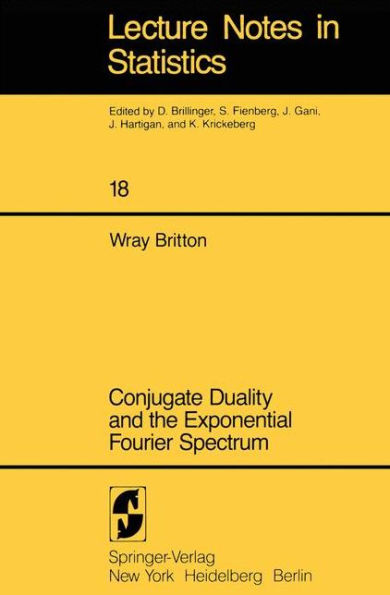5
1
9780387908267


Conjugate Duality and the Exponential Fourier Spectrum / Edition 1 available in Paperback

Conjugate Duality and the Exponential Fourier Spectrum / Edition 1
- ISBN-10:
- 0387908269
- ISBN-13:
- 9780387908267
- Pub. Date:
- 03/14/1983
- Publisher:
- Springer New York
- ISBN-10:
- 0387908269
- ISBN-13:
- 9780387908267
- Pub. Date:
- 03/14/1983
- Publisher:
- Springer New York
109.99
In Stock

Product Details
| ISBN-13: | 9780387908267 |
|---|---|
| Publisher: | Springer New York |
| Publication date: | 03/14/1983 |
| Series: | Lecture Notes in Statistics , #18 |
| Edition description: | Softcover reprint of the original 1st ed. 1983 |
| Pages: | 226 |
| Product dimensions: | 6.10(w) x 9.25(h) x 0.02(d) |
From the B&N Reads Blog
